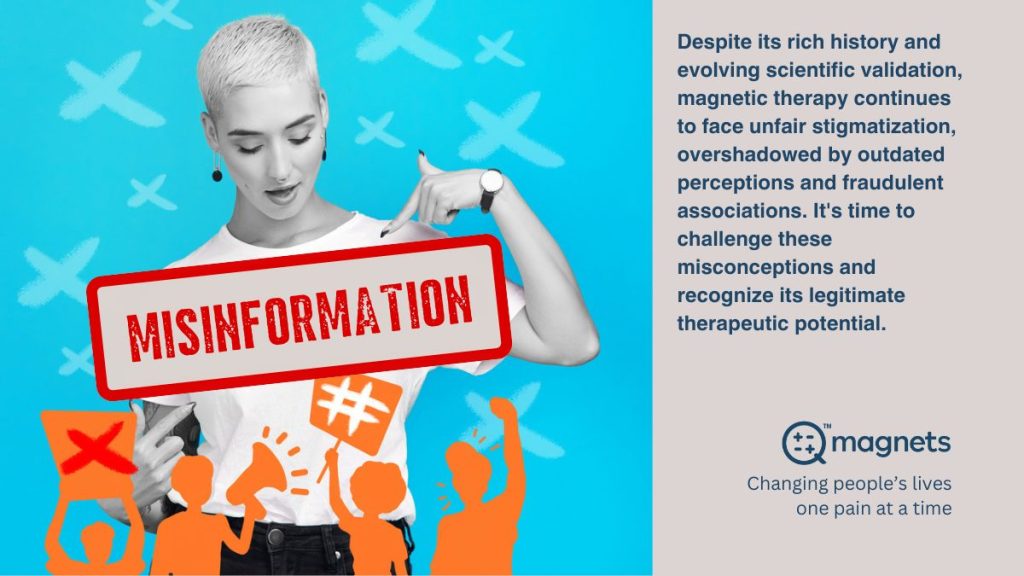Magnetic field therapy has a rich history, dating back centuries, and used for a variety of therapeutic purposes. First used by prominent scientists, like the physician to Queen Elizabeth I, William Gilbert and the famous 19th century physician Franz Mesmer, who popularised animal magnetism and mesmerism. Sure, there have been dodgy practices using static magnets, but nothing as serious as bloodletting, lobotomies or early nerve ablation practices. How is it, that even today, magnetic field therapy faces unfair stigmatization, as seen in recent discussions?
In William Conner’s dissertation1, magnetic therapy is used as an example to challenge the justification of beliefs based on expert testimony.
In this context, the author presents a scenario where an individual named Bill suffers from debilitating migraines and seeks help from a medical professional who turns out to be a fraudulent practitioner. The supposed doctor attributes Bill’s migraines to an “imbalance in his aura” and recommends a magnetic therapy treatment, which Bill believes and follows without any reasons to doubt the doctor’s credibility or the treatment’s efficacy.
It’s a ridiculous example. Who has even heard of such a treatment, using magnets to balance one’s aura to treat a migraine. Meanwhile, there are many credible ways to use static magnets for headaches and migraines.
By associating magnetic therapy with fraudulent practices, the example reinforces a negative stereotype, overshadowing the legitimate uses of magnetic fields in pain management and healing.
Similarly, an article from the Pittsburgh City Paper2 discusses the University of Pittsburgh’s new chiropractic program, which touches on magnetic therapy. The article promotes the integration of chiropractic care with mainstream medicine, but contrasts its controversial origins and early practices including magnetic therapy. This approach contributes to the ongoing stigma by implying that magnetic therapy is part of the outdated and debunked practices, without giving due consideration to its evolution and current scientific backing.
Additionally, a critical article in The BMJ3 highlights the methodological flaws in many studies supporting magnetic therapy, using these flaws to broadly discredit the practice. While it’s important to scrutinize research methods, the article’s tone suggests a blanket dismissal of magnetic therapy as ineffective, despite some studies indicating potential benefits under specific conditions.
As advocates for magnetic field therapy, it’s crucial to challenge these outdated perceptions and highlight the scientific advancements that validate its efficacy. We invest a lot of time and effort at www.qmagnets.com to do just this. By educating the public and promoting evidence-based practices, we can help dispel the myths and ensure that magnetic therapy is recognized for its legitimate therapeutic potential.
REFERENCES:
- Conner, William (2024). An Examination of the Epistemology of Prejudiced Belief. Doctoral Dissertation, University of Pittsburgh. https://d-scholarship.pitt.edu/46659/
- https://www.pghcitypaper.com/news/pitts-new-chiropractic-school-is-joining-the-war-on-back-pain-this-fall-but-is-it-safe-26379001
- https://www.bmj.com/rapid-response/2011/10/31/magnet-therapy-real-truth

